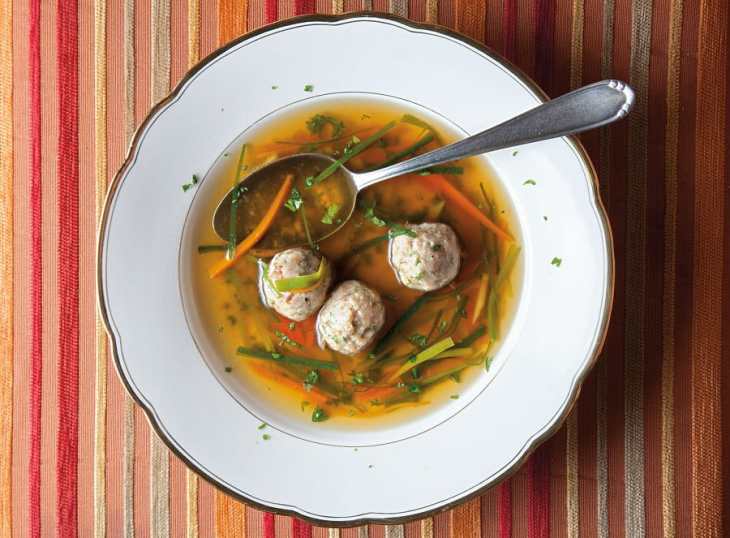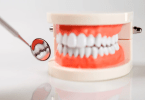The magical effect of tonic soup has long been in folklore. Chicken soup, bone soup, beef soup are delicious, and if it can have a health effect, it is of course the best. However, Drink Soup there are also many popular science people and nutrition experts who say that soup is actually not very nutritious, and the nutrients are all in the “slag”. What is the truth? Let’s talk about it from a scientific perspective today.

The calcium in the bone is difficult to cook
Let’s talk about the most popular Bone broth recipe chicken,”Bone Soup”. It is traditionally believed that bone soup can supplement calcium and strengthen bones and promote milk production. However, these effects are inseparable from the foundation of calcium supplementation (human milk is also rich in calcium).
Drink Soup is reasonable to think that bones can supplement calcium. Because 99% of the amount of calcium in the animal body exists in bone tissue, it mainly exists in the form of hydroxyapatite crystals and is insoluble in water. Other forms include trace amounts of non-crystalline phosphate/citrate and carbonate (also insoluble in water), and trace amounts of calcium ions present in blood and cells. Therefore, bones are a large warehouse for storing calcium in animals.
However, because the calcium in the bone is in a “strong” insoluble state, it is difficult to boil it.
As early as 1999, there were research papers discussing how much calcium can be dissolved in the bone soup. The result is this: the bone soup is boiled with three distilled water that does not contain calcium ions at all, and the calcium content in the soup is negligibly low; Then I used a pressure cooker, increased the pressure, and cooked for two hours, which did not increase the calcium content in the bone soup. Therefore, bone soup can not supplement calcium.
Bone soup cooked with vinegar, calcium content is not as good as Chinese cabbage
However, many people will say: I added two spoons of vinegar when cooking bone soup. Doesn’t vinegar dissolve bone calcium? That’s right. Drink Soup The key is how much vinegar is added and how much calcium can be dissolved.
In another study published in 2008, researchers chopped 500g of pig femur, added 1500g of water, and then added 75g of vinegar when boiling, and continued to slowly cook the soup. Results Compared with the treatment without vinegar, the calcium content in the bone soup did increase significantly. At the same time, other minerals, such as magnesium, potassium and zinc, were measured, and the amount of dissolution increased.
The point is, how much calcium does it dissolve? Added 75g of vinegar, about 7-8 spoons by ordinary tablespoon, enough is enough. But after adding vinegar, the calcium content in the soup is still very low, 49mg/kg.
Daily evaluation of food nutrition is generally calculated in mg/100g, 49mg/kg is 5mg/100g. This amount is really not too much-Chinese cabbage contains 50mg/100g of calcium, milk and brine tofu calcium content exceeds 100mg/100g.
According to the reference intake of nutrients in our country, adults are 800mg per day; the recommended amount for middle-aged and elderly people over 50 years old and expectant mothers and nursing mothers is 1000mg. At present, the daily intake of calcium in the diet of Chinese residents is about 400mg, so most adults supplementing 400mg is basically enough.
In order to supplement calcium and Drink Soup, drink 400mg÷5mg/100g=approximately 8kg of soup to achieve calcium supplement effect. Even drinking 8kg of water a day is dangerous, let alone 8kg of greasy soup!
No matter what kind of bone soup, calcium contains less than milk
Although the calcium in the bones seems to be out of oil and salt, there are opportunities to come out.
On the one hand, the amount of vinegar can be increased. Instead of adding 75g of vinegar, but adding 300g, it is almost the same as using vinegar instead of white water to boil bone soup. In this case, in theory, the dissolution amount of calcium can be increased by 4 times, 20mg/100g, or a little calcium supplement.
For example, there is a “sweet vinegar pig’s foot soup” for pregnant women in Guangdong. It is necessary to put a large bowl of sweet vinegar (about 300-400 grams) and add water to boil the soup for several hours. It is estimated that three or four bowls of soup a day can supplement About one hundred milligrams of calcium, not much, not much.
Another method is to use a machine to crush bones into bone mud, and then cook it for a few more hours, the calcium content is relatively high. Some of the so-called “bone soup noodles” will add some bone paste. But in fact, bone mud can’t be eaten directly, it needs to add soup to make it thinner dozens of times. After dilution, the calcium content in a bowl of bone soup noodles is only a few tens of milligrams, but at least it is much higher than the calcium in ordinary bone soup.
Read Also: Chinese eat human baby soup for stamina and sex
Therefore, no matter what kind of bone soup, calcium contains less than milk, including the so-called bone mud soup.
Milky white soup is formed by emulsified fat
Has little to do with nutritional value
I believe many people will say: But there is milk nutrition in the soup. Many people are superstitious about milky milk soups, and think they are particularly “tonic”.
In fact, the reason why some long-lasting thick soups appear milky white is just the emulsification of fat, which is not related to how high the nutritional value is. That is to say, the microspheres of lipid substance are evenly dispersed in water, causing light scattering and turning into milky white. This is just an optical phenomenon brought about by the emulsification effect.
For example, when cooking stick bones, when cooking chicken skin, when cooking crucian carp, when cooking roasted duck and duck rack, when cooking egg yolk… will dissolve some collagen or other soluble proteins, as well as various phospholipids, which have the effect of natural emulsifiers . Under the condition of rolling water boiling, protein and phospholipid can help fat microspheres to be stably dispersed in water, so the soup can be cooked into milky white. The higher the fat content, the thicker the milky white and the thicker the soup, so when making crucian milk soup, the fish must be fried, otherwise the soup will be too thin.
If the soup is simmered slowly, the water will not boil and the fat will not be emulsified and dispersed, so it will accumulate on the surface of the soup to form a layer of oil slick.
Bone marrow is full of saturated fat
Speaking of which, some people may say: The oil from the bone marrow is not the same as fat. It is a magical substance that can “replenish the essence”.
The bone marrow is a good thing. Similar to human development, the bone marrow cavity of young animals such as pigs, cows and sheep is red bone marrow capable of producing blood cells and lymphocytes, which is rich in iron and protein. After being cooked, the red bone marrow will turn brown. But as animals continue to mature, red bone marrow will continue to transform into yellow bone marrow, losing hematopoietic function. After the yellow bone marrow is cooked, it is the white bone marrow that we have seen. It tastes greasy.
Walnut soup is cooked using walnuts as a primary component. The soup can be made as a broth-based or cream-based soup, and the latter can be related to as “cream of walnut soup. Fresh or preserved shelled walnuts can be practiced, and the soup can include pureed, cut, and whole walnuts. Toasted walnuts can be used to make the soup. Walnuts Nutrition Facts is seldom prepared in organizations using other elements, such as “squash and walnut soup,” “pumpkin and walnut soup,” and “cucumber and walnut soup,” with others. Extra ingredients can combine butter, oil, walnut oil, lemon juice, spices, salt, and pepper.






